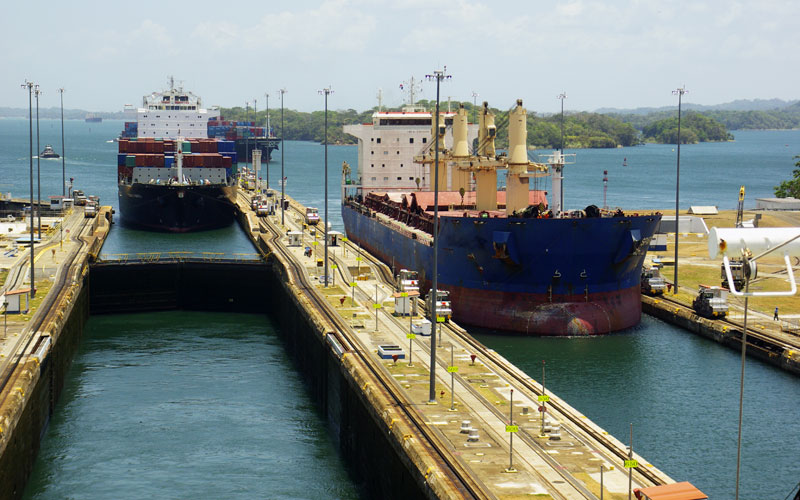The Panama Canal Authority prepares for a second century of shipping by undertaking a $6 billion expansion project that will have an enormous impact for world trade

There were many great civil engineering feats during the 19th and 20th centuries, but perhaps the greatest, largest and most ambitious was the Panama Canal. Constructed by the U.S. between 1904 and 1914, the 77km waterway revolutionized world trade, providing a shortcut from the Atlantic to the Pacific Ocean that cut the four-week trek around South America down to just four hours.
A century on and the canal now handles 14,000 vessels carrying 200 million tonnes of cargo each year, which equates to roughly 6% of all global trade. With the Panama Canal Authority (PCA) commanding transit fees for container ships ranging from $50,000 to $250,000, it is easy to understand the waterway’s importance for the Panamanian economy.
The world of shipping of course has changed a lot since it opened in 1914. As vessels have increased in size, the Panama Canal in recent years has lost a lot of business to the Suez Canal in Egypt, which can handle much larger ships. In order to enhance its competiveness, the PCA began work on the expansion of the canal in 2007. The $6 billion expansion project, due to completed in early 2016, will allow the isthmus waterway to accommodate modern super-sized vessels.
Currently the two existing set of locks permit vessels with a maximum capacity of 5,000 TEUs. By creating a larger third set of locks, vessels carrying up to 13,000 TEUs will be able to pass through. “When the expansion is finished, we expect to regain a large part of the market share that has gone to the Suez Canal,” says Minister of Canal Affairs Roberto Roy.
“The Panama Canal expansion is a massive undertaking that has great symbolic significance for civil engineers around the world who design, build and maintain infrastructure,” says Robert D. Stevens, President of the American Society of Civil Engineers. “It will impact the world economy, by providing a new route for much larger ships with greater capacity to move goods to and from ports at lower cost. To accommodate these larger ships, civil engineers have been working to dredge and deepen the waters at many parts along the Gulf of Mexico and the east coast of the United States.”
The canal expansion will have much significance for the United States as it once again prepares to become one of the world’s main exporters of energy. Large ships carrying U.S. gas (derived from its recently developed shale reserves) from the Gulf of Mexico or the east coast will be able to pass through the canal and onto big markets in Asia such as China, South Korea and Japan.
“The U.S. is going to be a net exporter of energy, and what that means for us is a considerable increase of ships using the canal. This will mean bring huge economic benefits,” says Mr. Roy, who adds that Japan will be a particularly important market for U.S. gas, because of the phasing out of its nuclear energy program following the Fukushima disaster. The journey time for large ships from the U.S. to Japan through the expanded Panama waterway will be cut by up 20 days. Besides U.S. gas, the canal could also be used to ship larger volumes of other commodities such as coal and iron ore originating from Colombia and Venezuela onto destinations in Asia.
Before the current expansion project is even complete, there have already been talks of further development of the canal. In August a delegation of Chinese investors headed by Mo Wenhe, Chairman of the China Harbour Engineering Company, were in Panama to discuss the construction of a fourth set of locks which would be able to accommodate larger ships carrying up to 18,000 TEUs. With work starting on a Nicaraguan canal, and Egypt planning its own expansion of the Suez Canal, the isthmus waterway will be facing even stiffer competition in the future, making the proposed construction of a wider fourth lock all the more necessary.
0 COMMENTS